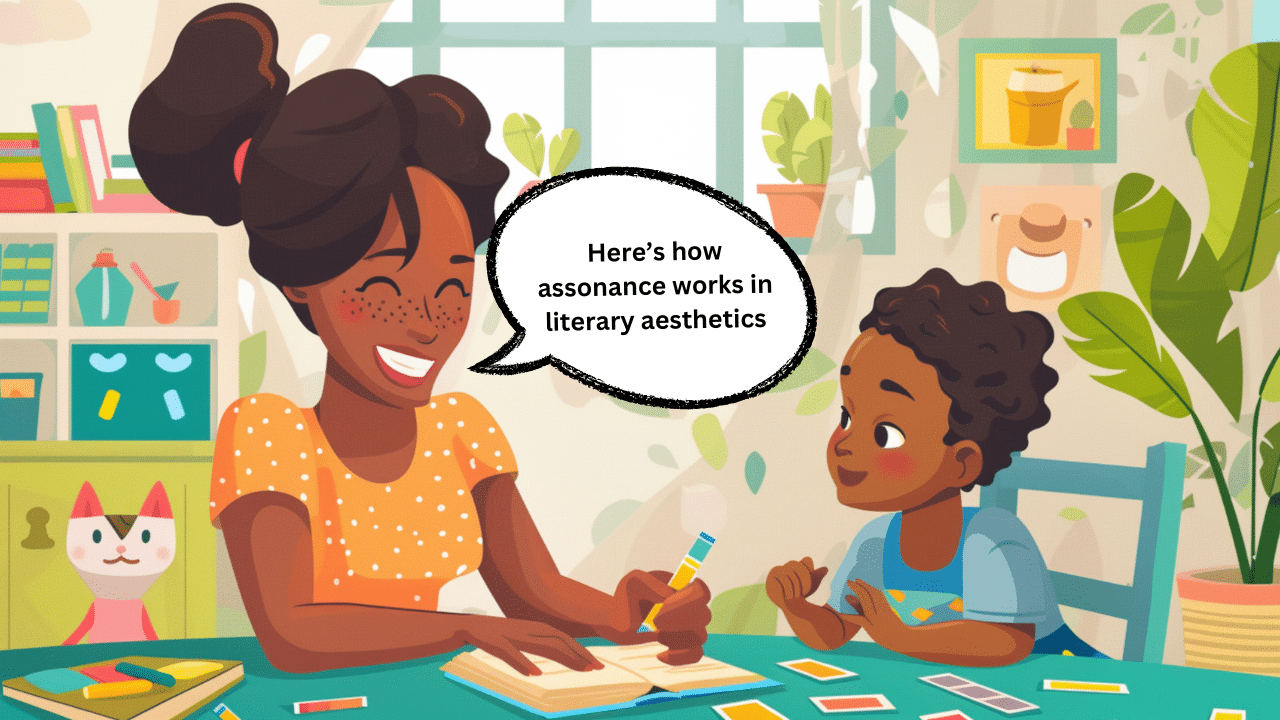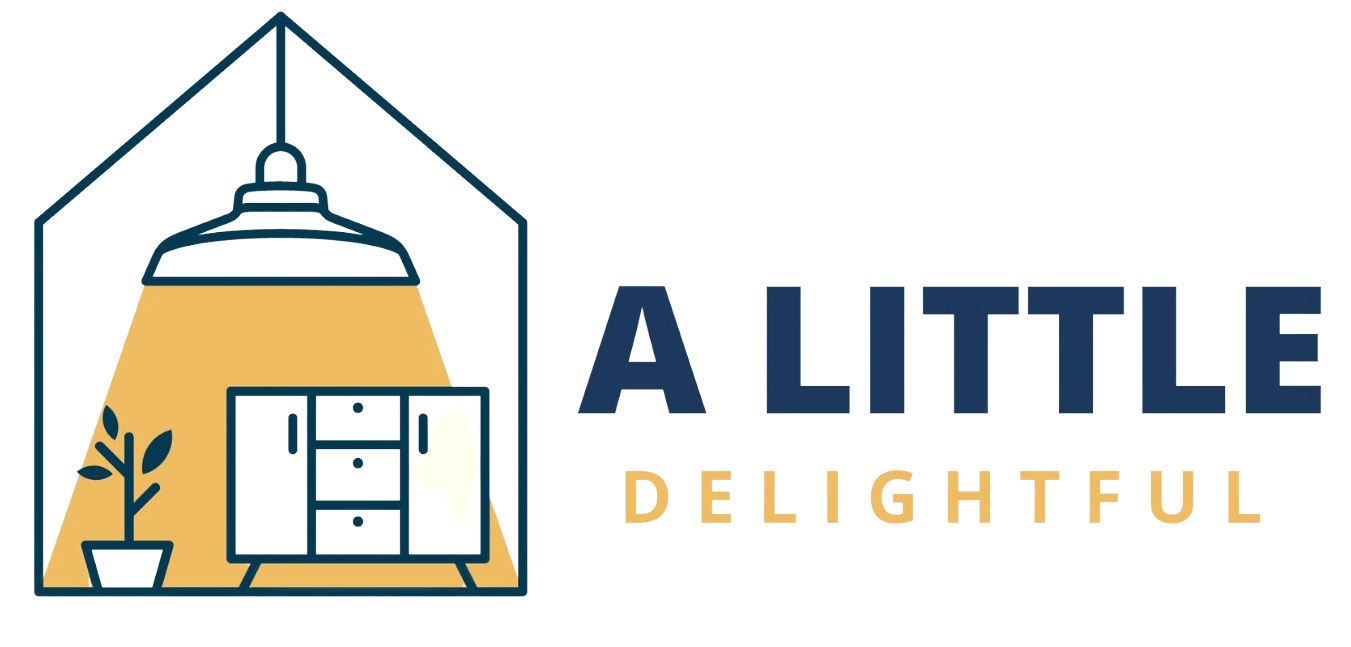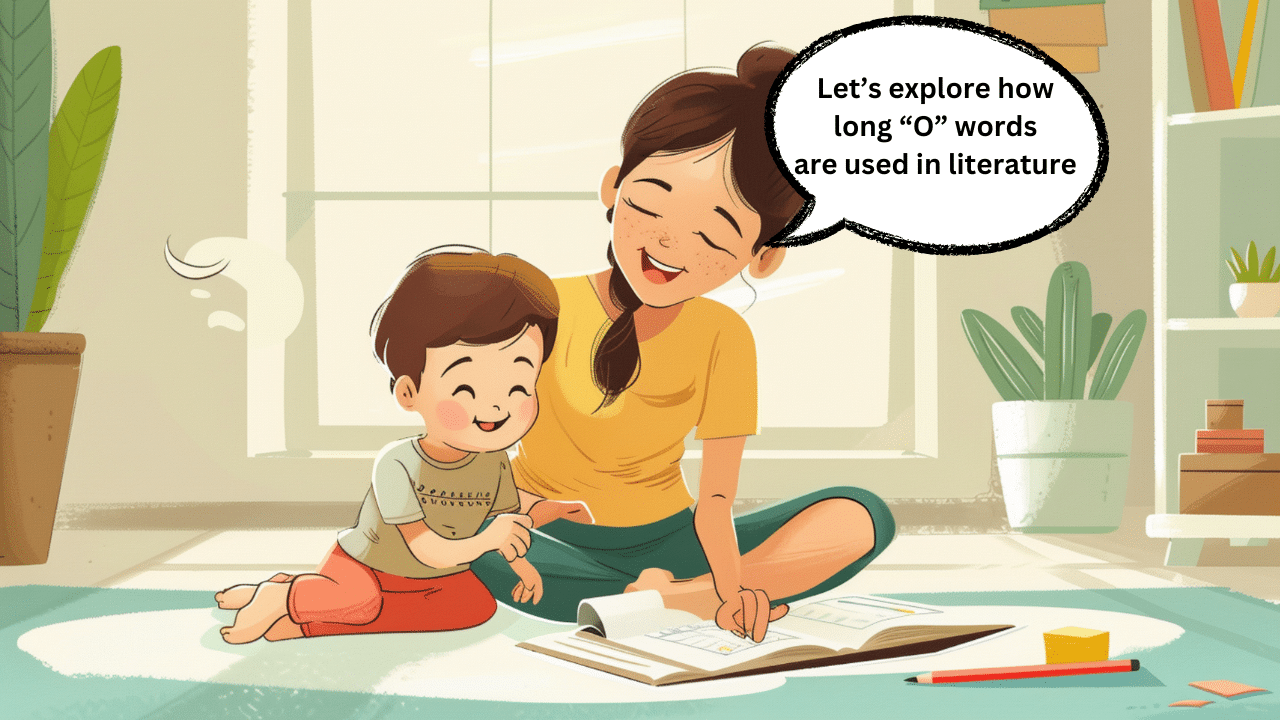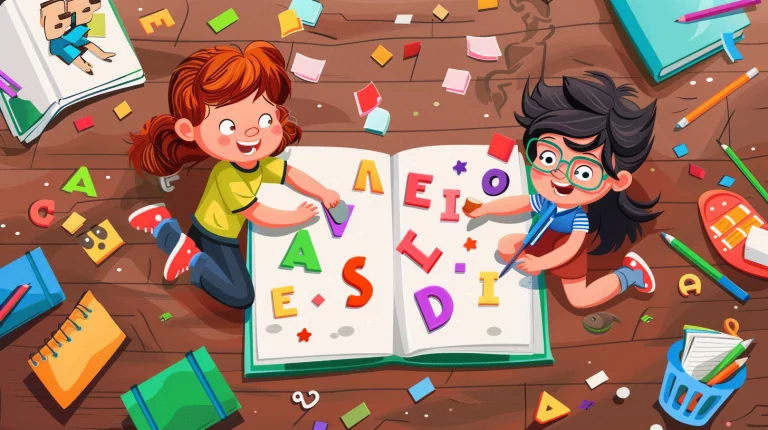Long ‘O’ Words in Literature: Examples and Analysis
Long ‘O’ words, characterized by their prolonged vowel sound, uniquely impact literary works’ rhythm, tone, and overall aesthetic.
These words, such as “moan,” “roam,” and “forlorn,” often evoke a sense of melancholy, longing, or contemplation.
By carefully employing long ‘O’ words, authors can manipulate the pacing of their prose, creating a more reflective or somber atmosphere.
Moreover, the repetition of long ‘O’ sounds, known as assonance, can contribute to the musicality of the text, making it more memorable and emotionally resonant.
Literary analysts often pay close attention to using long ‘O’ words, as they can provide insights into the author’s intended mood, themes, and stylistic choices.
By examining the frequency and context of these words, readers can better understand the work’s overall tone and the author’s artistic intentions.
The Role of Assonance in Literary Aesthetics

Assonance is a literary device that involves the repetition of vowel sounds within a group of words, often near one another.
It differs from rhyme, which focuses on the repetition of both vowel and consonant sounds at the ends of words.
Assonance, particularly with long ‘O’ sounds, plays a crucial role in enhancing the aesthetic quality of literary works:
1. Evoking Emotions
- Long ‘O’ words often evoke feelings of melancholy, longing, or contemplation.
- Repeated use of these sounds can amplify the mood and themes of a passage.
2. Creating Musicality
- Assonance lends a musical quality to the text, making it more memorable and impactful.
- The repetition of vowel sounds creates a sense of rhythm and flow.
- This musicality enhances the reader’s engagement with the work.
3. Slowing Reading Pace
- In prose, assonance with long ‘O’ sounds can slow the reading pace.
- It draws attention to specific words or phrases, encouraging readers to linger on certain passages.
- This emphasis helps to highlight key ideas or emotions.
4. Enhancing Cohesion
- Assonance contributes to the overall flow and cohesion of a piece of writing.
- By establishing a consistent sound pattern, authors create a sense of unity and structure.
- This cohesion enhances the reader’s experience and understanding of the text.
5. Conveying Grandeur
- The repetition of long ‘O’ sounds can lend a feeling of expansiveness or grandeur to a text.
- This makes the writing feel more epic, profound, or impactful.
- Example: “The old oak grove stood silent, a solemn reminder of the souls who once roamed beneath its boughs.”
Assonance, especially with long ‘O’ sounds, is a powerful tool for authors to create a more immersive, emotionally resonant, and aesthetically pleasing reading experience.
By harnessing the musicality and connotations of these sounds, writers can elevate their craft and leave a lasting impact on their audience.
Understanding Long ‘O’ Patterns and Their Application

Long O words follow several distinct patterns that help readers identify their pronunciation. By recognizing these patterns, learners can more easily decode unfamiliar words and improve their reading fluency. The most common Long ‘O’ patterns include:
1. “Magic E Words” (o_e): In this pattern, the “e” at the end of the word is silent, signaling that the preceding “o” makes the Long ‘O’ sound. Examples include:
– Nope
– Joke
– Phone
– Stone
2. “oa” Pattern: When the letters “o” and “a” appear together in a word, they typically produce the Long O sound. This pattern can occur at the beginning or middle of a word. Examples include:
– Oat
– Goal
– Road
– Toad
3. “ow” Pattern: Many words containing “ow” make the Long O sound, though there are exceptions where “ow” produces a different sound (like in “cow”). Examples of “ow” words with the Long O sound include:
– Low
– Snow
– Own
– Yellow
4. Open Syllable: When a syllable ends with the letter “o,” it often makes the Long O sound. This is known as an open syllable. Examples include:
– Go
– No
– Robot (only the first “o” is long)
– Poem
By familiarizing themselves with these patterns, readers can approach Long ‘O’ words more confidently and improve their reading skills.
Recognizing the patterns in context and through repeated exposure will help solidify the connection between the written word and its pronunciation.
Practical Examples and Exceptions

Recognizing patterns and exceptions in long O words is crucial for mastering pronunciation and usage.
By familiarizing oneself with common examples and exceptions, readers can more confidently approach unfamiliar words and improve their reading fluency.
Consider the following patterns and examples:
1. “Magic E Words” (o_e):
- This pattern features a silent “e” at the end of the word, signaling the long ‘O’ sound.
- Examples include “nope,” “joke,” “hole,” “phone,” “nose,” “those,” and “stone.”
- There are two exceptions: “lose” (which makes an “oo” sound) and “love” (which makes a short “u” sound).
2. “oa” Pattern:
- When “o” and “a” appear together, they produce the long O sound.
- Examples include “oat,” “oak,” “goal,” “road,” “board,” and “toad.”
- There are no common exceptions to this rule.
3. “ow” Pattern:
- Many “ow” words make the long ‘O’ sound, but some produce a different sound (like in “cow”).
- Examples of “ow” words with the long ‘O’ sound include “low,” “snow,” “show,” “row,” “own,” and “yellow.”
- Exceptions: “allow,” “cow,” “brown,” “down,” “frown,” “how,” “now,” and “towel” (make an “ou” sound).
4. Open Syllable:
- A syllable ending with “o” often makes the long ‘O’ sound.
- Examples include “go,” “no,” “robot” (only the first “o”), “poem,” and “also.”
- Exception: “to” (makes the same sound as “ou” in “you”).
5. “o” Followed by Two Consonants:
- In single-syllable words, “o” followed by two consonants often produces the long ‘O’ sound.
- Examples include “cold,” “fold,” “most,” “gold,” and “told.”
- Exceptions: Words ending in “-sh” or “-th” like “moth,” “posh,” and “sloth.”
5. “oe” Pattern:
- Though less common, “oe” consistently makes the long O sound.
- Examples include “toe,” “foe,” and names like “Joe” and “Moe.”
- There are no significant exceptions to this pattern.
By studying these patterns and examples, readers can develop a strong foundation in long ‘O’ words, enhancing their ability to decode unfamiliar words and improving their reading comprehension.
Recognizing exceptions is equally important, as it helps readers avoid overgeneralizing rules and encourages them to consider each word individually, leading to more accurate pronunciation and usage.
Enhancing Literary Analysis Through Long O Words

Identifying and understanding the use of long ‘O’ sounds in literature can significantly enhance literary analysis and appreciation.
By recognizing the patterns and exceptions of long ‘O’ words, readers can gain deeper insights into the author’s craft and the overall aesthetic impact of the work.
Consider the following points:
1. Assonance and Mood
- Long O words often evoke feelings of melancholy, longing, or contemplation.
- Repeated use of long ‘O’ sounds through assonance can amplify a passage’s mood and themes, creating a more immersive reading experience.
- Example: “Alone, I roam the roads unknown, my soul forlorn and torn.”
2. Musicality and Rhythm
- Assonance with long ‘O’ sounds lends a musical quality to the text, making it more memorable and impactful.
- When combined with alliteration, long ‘O’ assonance can create a distinct rhythm that enhances the overall structure and flow of the work.
- Example: “Slow, low, and mellow, the melody flowed through the hollow.”
3. Emphasis and Attention
- Repetitioning long O sounds can slow the reading pace, drawing attention to specific words or phrases.
- This emphasis encourages readers to linger on certain passages, allowing them to understand key ideas or emotions better.
- Example: “The old oak stood stoic, a lone sentry guarding the grove.”
4. Thematic Resonance
- Long O assonance can resonate with the content of the lines or sentences in which it occurs, reinforcing the themes or ideas being explored.
- By examining the use of long O words in context, readers can better understand the author’s intentions and the work’s overall meaning.
- Example: “The forlorn soul, adrift on sorrow’s ocean, longed for home.”
By paying close attention to the use of long O words in literature, readers can appreciate the author’s skill in crafting a more immersive, emotionally resonant, and aesthetically pleasing reading experience.
This enhanced understanding can lead to more insightful literary analysis and a greater appreciation for the power of language in conveying meaning and evoking emotion.
Final Words
Long ‘O’ words are crucial in shaping the aesthetic and emotional landscape of literary works.
By employing various patterns and exceptions, authors harness the power of these sounds to evoke moods, create musicality, and emphasize key ideas.
From the sad tones of “forlorn” to the contemplative nature of “roam,” long ‘O’ words can immerse readers in the text and deepen their understanding of the work’s themes and intentions.
Recognizing and analyzing the use of long O sounds in literature enhances the reader’s appreciation for the author’s craft and highlights the importance of phonetic awareness in literary studies.
By developing a keen ear for these sounds and their effects, readers can unlock new layers of meaning and engage with the text more profoundly.
Ultimately, the study of long ‘O’ words in literature underscores the intricate relationship between sound and sense, reminding us of the power of language to move, inspire, and transform.








